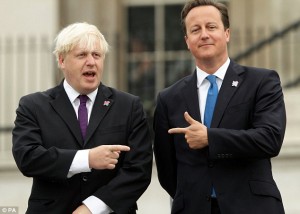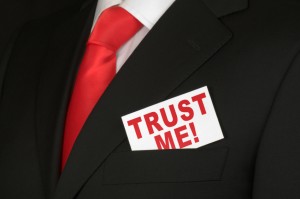Managing The Matrix

Task: Assemble the best team.
One of my largest clients is re-engineering its organization to focus on functions rather than geographies. It’s a classic move from top-down management to matrix management. I think it’s very much the right thing to do but it’s making some of the managers nervous. How does one shift from managing a team to managing a matrix?
I went through a similar transition at Lawson, the last major software company that I worked for. We transitioned from geographies – Sweden, Western USA, Australia/New Zealand – to global teams that focused on vertical markets like healthcare, food and beverage, and fashion. We focused on industries rather than geographies and became expert advisors to our customers.
And what did I learn about managing in a matrix? Here are the key ideas that stood out for me.
Connectors succeed – in a geographic organization, a manager gets to know her team and learns how to accentuate their strengths and minimize their weaknesses. Team members are often physically close to each other. There’s no need to connect them; they’re already connected. In a matrix, the ability to connect people is the most important single skill. People who are natural connectors are often the best matrix managers.
Diplomacy counts – diplomacy is a useful skill for any manager. It’s especially important in a matrix. In a top-down organization, a manager could simply give orders without much tact or diplomacy. Not so in a matrix. A matrix manager is forever building teams – one team to address Issue X, and another to address Issue Y. A matrix manager is always recruiting and needs a positive attitude, good diplomatic skills, and a good understanding of what motivates people.
A good manager can build all-star teams – let’s say I wanted to sell Lawson software to the Swedish fashion house, Filippa K. With the right diplomatic and connecting skills, I could assemble an all-star team to sell the account. My team might include a design expert from New Zealand, a cut-and-sew expert from New York, and a retail expert from Stockholm. I pull them together and focus them intently on the task of selling to Filippa K. Once they sell the account, the team dissolves and the team members reassemble — perhaps with other teammates – to focus on a different project. The good news is that a matrix manager gets to work with all-stars all the time. The not-so-bad news is that a successful matrix manager needs to continually assemble and re-assemble teams in ever-changing patterns.
Talent spotting becomes more important– in a geographic organization, employees do multiple things in a designated area. They become jacks-of-all-trades. In a matrix organization, employees are much more likely to specialize in a given function. They can master the skill. The successful matrix manager knows how to spot the most talented employees and recruit them to her (temporary) team.
Flexibility and adaptability count – flexibility is the strongest point of matrix organization. Managers can quickly assemble and re-assemble teams based on changing needs. This only works if managers are equally flexible. Managers must be fluid; they can’t stay attached to a permanent structure. There is no permanent structure.
Managers must work effectively with each other – in a matrix, an employee often has more than one manager on a given project. For instance, that retail expert from Stockholm would report to me temporarily while working on the Filippa K account. At the same time, she would also report to the overall head of the retail team, who might be located in Melbourne. It can get confusing and roles need to be clearly defined. At the same time, managers need to work effectively with their peers cross the matrix. If I have a beef with the manager in Melbourne, things will go downhill quickly. Again, diplomacy and good communication are key ingredients for success.
The matrix changes the culture – in geographic organizations, teams may easily fall into competition with each other. I would have no incentive to lend my retail expert to another geography. That would only crimp my chances of making my number. A matrix, on the other hand, emphasizes cooperation. If a manager doesn’t make her all-stars available, she doesn’t get access to other all-stars. Sharing becomes more important than competing.
Ultimately, good managers have nothing to be afraid of in a matrix organization. Even in traditional top-down organizations, good managers are likely to be effective communicators and motivators with good diplomatic skills. Those are the same skills that are required to succeed in a matrix.
The Art Of Transformation
 What’s the difference between an art and a craft?
What’s the difference between an art and a craft?
A traditional definition focuses on differences in expectations and outcomes. With a craft, we know precisely what the outcome will be, even before we start. We have a set of instructions and, if followed faithfully, the outcome is guaranteed.
By contrast, an artist doesn’t know what the outcome will be. Creating an artwork involves exploration, doubt, questioning, trial-and-error, and no small amount of anxiety. An artist explores the unknown and aims to give us new insights. A good artwork may not be beautiful in a classic sense, but it is always imaginative. A craftsman, on the other hand, creates the expected and delivers beauty and pleasure through execution more than imagination.
I thought of these distinctions the other day when I toured a major new exhibition, Women of Abstract Expressionism*, at the Denver Art Museum. The exhibition highlights a dozen leaders of the abstract expressionist movement and their work from roughly 1945 to 1960. Here’s how two of the artists describe the creative process:
- Grace Hartigan: “Eventually, the painting tells you what it wants to be.”
- Jay DeFeo: “When I start, I don’t know what’s going to happen. When you’re dancing, you don’t stop to think: now I’ll take a step … you allow it to flow.”
It occurs to me that the distinction between art and craft also applies to organizational development. Change management is a craft. Organizational transformation is an art.
We often invoke change management when we begin a concise and well-delineated project. We understand the boundaries and the players. We move through well-defined phases that we can measure objectively. We expect changes to occur between people – perhaps with new reporting structures and alignments. Change management is not easy to master but it seems to me that it is a craft. We often celebrate the end result. We can do that precisely because it is a craft – we know when the process ends.
Organizational transformation is much more like an art. When we seek to transform an organization’s culture, we have only a fuzzy idea of where we’re going. Milestones exist but they’re not well defined. Transformation requires changes within people rather than only between people. We can’t see those changes; nor can we measure them. If we try to measure the unmeasurable, we’ll go off course. Like any other art, transformation involves exploration, doubt, questioning, trial-and-error, and no small amount of anxiety. Paraphrasing Grace Hartigan, “Eventually, the organization tells you what it wants to be.” The secret to success is listening, not measuring.
I sometimes ask my artist friends how they know when a piece they’re working on is finished. None of them has very good answers. Some say they “just know”. Others say that they just get tired of it. Others say that it’s never finished. Whenever they see it again, they’re tempted to make “just a few minor changes.”
It occurs to me that I’ve never been to a party to celebrate an organizational transformation. Perhaps it’s because we just don’t know when the transformation is finished. It’s an art not a craft.
*The Women of Abstract Expressionism exhibit is both superb and unexpected. The paintings are exciting and energetic. The painters are almost anonymous. This is the first major exhibition – anywhere in the world — of the women who energized the abstract expressionist movement. That it happened in my hometown makes me more than just a little bit proud. You can see it – and should see it — until September 25th.
The painting illustrating this article is Grace Hartigan’s The King Is Dead, from 1960.
Filtering Water In The Information Desert

It’s a desert out there.
In organizations, large transformation efforts create information deserts. Traditional sources of information dry up. We search for new sources but they’re few and far between. When we do find them, we can’t be sure if the information is tainted or pure. Should we consume it or not?
The lack of information creates additional stress. We know we’re going on a “journey” but we don’t know where. We don’t even know how we’ll know when we get there. Perhaps we’ll never get there. Perhaps we’ll just continue transforming.
We also know that there will be some winners and losers in the process. Some people will get plum assignments; others will be relegated to minor roles. It’s not always clear who will make these decisions or how they will be made. So we don’t know how to behave to improve our chances of success.
We also fear that we’ll lose something. We know what we have today. While it may not be all we want, just knowing what we have brings some degree of comfort. As the organization morphs, we don’t know what we’ll have tomorrow. We could be worse off. Our loss aversion bias makes the possibility of loss seem more likely – and more painful – than the possibility of gain.
When we’re in a real desert, we want to find water. Indeed, we want to find good water. Drinking bad water could be worse than drinking no water at all. So we carry water filtration systems. When we find water, we can purify it and ensure that it will help us rather than harm us.
Similarly, in an information desert, we want to find good, trustworthy sources of information. Since traditional sources of information have dried up, we need to find new sources. But how can we tell if the new sources are trustworthy? Perhaps they’re tainted with rumor and conjecture. Perhaps consuming the information will do us more harm than good.
It’s not easy to create accurate and effective information for a transforming organization. But there are some good filters that can help employees distinguish good information from bad. The simplest one I’ve found is called the triple filter. Some writers say that Socrates created the filters. Others claim Arab philosophers developed them. Regardless of the source, it’s a good communication technique to keep in mind.
According to legend, when someone offered Socrates information – especially information that might be based on conjecture or rumor, he asked three sets of questions:
- Is it true? How do we know? How can we verify it? What’s the source? What’s the evidence?
- Is it good? This is especially important if the information is about a person. Does it portray the person in a good light? Is it kind? Does it assume positive intent?
- Is it useful? Is the information useful to me, the recipient? Can I use it to accomplish something positive?
The process is analogous to deciding what evidence is admissible in court. If the information didn’t pass all three tests, Socrates simply refused to hear it.
I think of these questions as three steps in a linked process. If the information can’t pass the first test – truth — there’s not much point in asking the other two questions. If the information is verifiably true, then it’s useful to continue the process. If the information passes all three tests, then it’s admissible and should be considered in decision making.
Organizations in transition are under a great deal of stress. Bad information only increases the pressure. The triple filter doesn’t make the desert bloom but it helps employees find oases of trust and certitude in a difficult and demanding environment.
Context Effects: PayPal and Brexit

Whom do you trust?
PayPal was recently skewered on social media because it sponsored a panel discussion on gender equality and inclusion in the workplace. The problem was that the panel consisted solely of men. Women quickly tore into the company on Twitter and Tumblr for being tone deaf and sexist.
In fairness to PayPal, the panel discussion was supposed to have been titled: “Gender Equality and Inclusion In the Workplace: A Conversation With Our Male Allies”. Somehow, the organizers omitted the last part of the title from the official program.
I suspect that PayPal’s panel was a well-intentioned effort to bridge the gender gap. But the organizers made a simple mistake – they focused on strategy and forgot about context.
In persuasion, we typically start by developing the message strategy. What is the key message that we need to communicate? How can we best encapsulate that message in a memorable campaign?
While message strategy is certainly critical, it’s not the only concern. We also need to consider the context the message is delivered in. It’s a fairly simple question: does the context create an opportunity to deliver our message effectively? Sometimes, contextual factors facilitate the message delivery. At other times, the context constrains our ability to communicate clearly. Creating an all-male panel on gender equality does not provide a favorable context.
From a timing perspective, Greek rhetoricians called this kairos. Translated literally, it means the “supreme moment”. In our context, kairos means finding the opportune moment to deliver a persuasive message. As Jay Heinrichs points out, it’s analogous to a teachable moment. A teacher finds the right moment to teach a memorable lesson. Similarly, a persuader finds the right moment to deliver a persuasive message.
Kairos refers to timing and timeliness. But we need to consider other contextual factors as well. Who delivers the message? In what forum? What is the audience ready to receive? Whom does the audience trust? What media and channel provide the best opportunity to deliver the message successfully?
In this context, I wonder about the Brexit campaign in the United Kingdom. One side – the Remain campaign — argues that Britain will be stronger by staying in Europe. The other side – the Leave campaign — argues that leaving will make Britain great again. Both sides have worked out their message strategies.
Polls suggest that the two sides are very evenly divided. Both sides have strong messages. Neither has a clear advantage. Given this, which side will be more persuasive? In my humble opinion, it will be the side that makes best use of contextual factors. In this regard, the Leave campaign has a clear advantage.
While the Remain campaign has a solid message, it’s misreading the context. More specifically, it’s using the wrong messengers (again, in my humble opinion).
Here’s the context. Voters who support the Leave campaign perceive that their economic situation has deteriorated since Britain joined the European Union. They also perceive that joining the Union was a project conceived and championed by the “elite”. It’s easy to conclude that the elite classes have “sold us out”.
And who is speaking for the Remain campaign? By and large, it’s the elite. We hear from top managers, bankers, executives, rich people, and assorted toffs. We even hear from the head of the IMF, who happens to be French. Now, we even hear from the president of the United Sates.
Who are these people? They’re the elites – exactly the people whom the Leavers don’t trust. The easy response from the Leave campaign: “Well, you remember what happened the last time we trusted them.”
If the Remain campaign continues to pursue an elite strategy, I suspect the Leave campaign will win – and by a wide margin. What’s the lesson in all this? Whether you’re PayPal or the British Prime Minister, consider the context.
